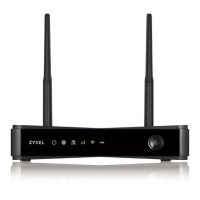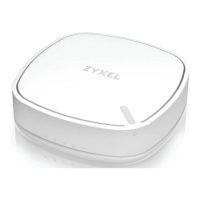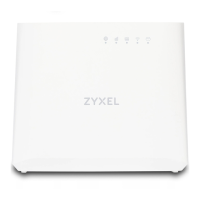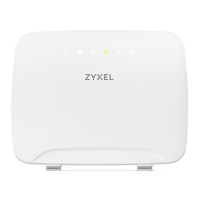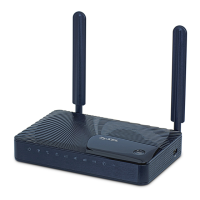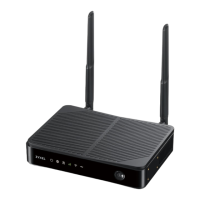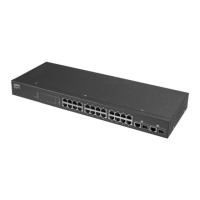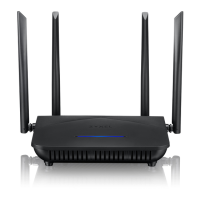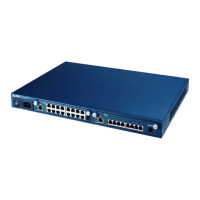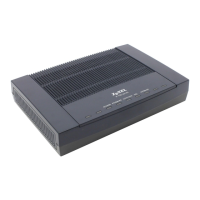LTE7460-M608 User’s Guide
57
CHAPTER 7
Networking
7.1 Overview
This chapter describes how you can configure the LTE7460-M608’s operating mode, IP/port filtering,
ALG, DoS Attack, DNS and DDNS settings.
7.1.1 What You Can Do in this Chapter
• Use the Operating Mode screen to configure the LTE7460-M608’s operating mode (Section 7.2 on
page 59).
• Use the TR069 to configure the LTE7460-M608’s TR-069 auto-configuration settings.(Section 7.3 on page
61).
• Use the DNS Settings screen to configure the LTE7460-M608’s DNS settings (Section 7.4 on page 63).
• Use the Firewall screen to protect your LTE7460-M608 from attacks on the Internet and control access
to it (Section 7.5 on page 64 to Section 7.10 on page 70).
• Use the DDNS Settings screen to enable and configure the LTE7460-M608’s DDNS (Section 7.11 on
page 71).
• Use the VPN Pass Through screen to allow VPN traffic to pass through the LTE7460-M608 (Section 7.12
on page 72).
• Use the Certificate Management screen to upload or view the current certificate used for HTTPs and
SSH (Section 7.13 on page 73).
• Use the Bandwidth Management screen to configure the LTE7460-M608 bandwidth profiles (Section
7.14 on page 74).
• Use the Remote Management screen to configure port settings for the WAN side access to the
LTE7460-M608 (Section 7.15 on page 76).
• Use the ICMP screen to change the LTE7460-M608’s security settings. (Section 7.16 on page 78).
Note: DNS Settings, Firewall, DDNS, VPN Pass Through, Bandwidth Management and ICMP
screens are not available if your LTE7460-M608’s operating mode is on bridge mode. To
learn more about changing your LTE7460-M608’s operating mode see Section 7.2 on
page 59.
7.1.2 What you need to know
The following terms and concepts may help as you read this chapter.
DNS
DNS (Domain Name System) maps a domain name to its corresponding IP address and vice versa. The
DNS server is extremely important because without it, you must know the IP address of a computer
before you can access it. The DNS server addresses you enter when you set up DHCP are passed to the
client machines along with the assigned IP address and subnet mask.
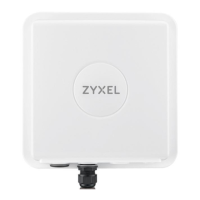
